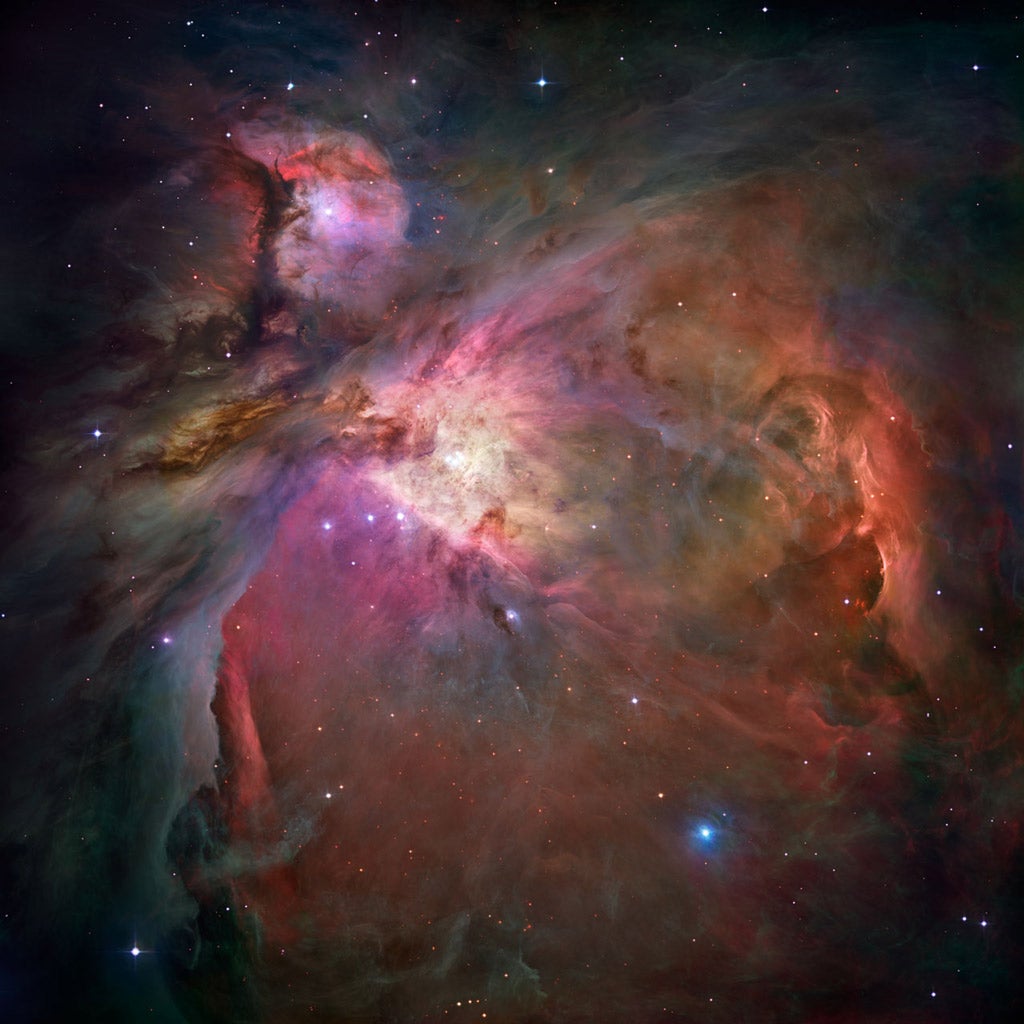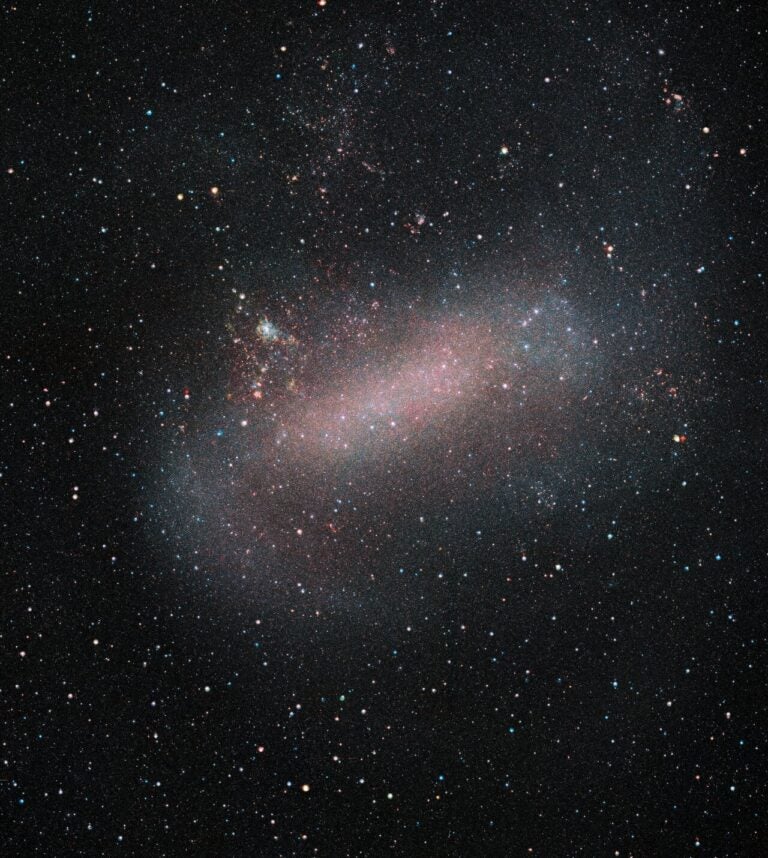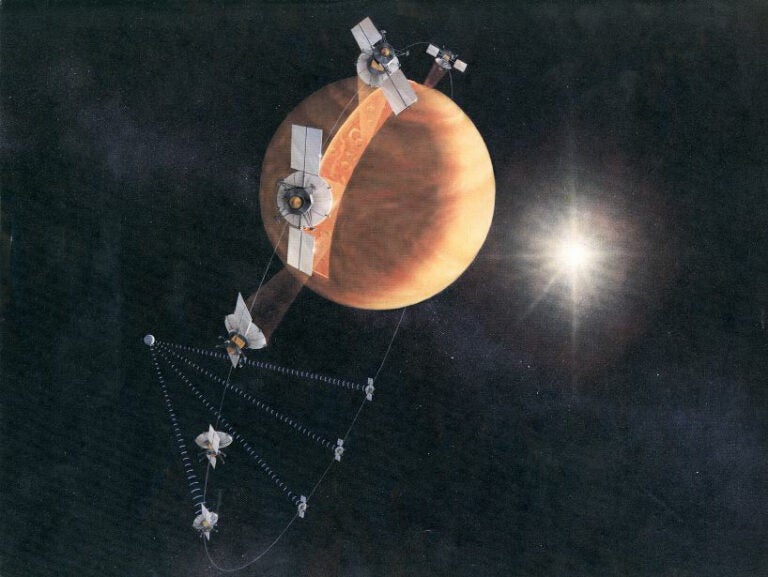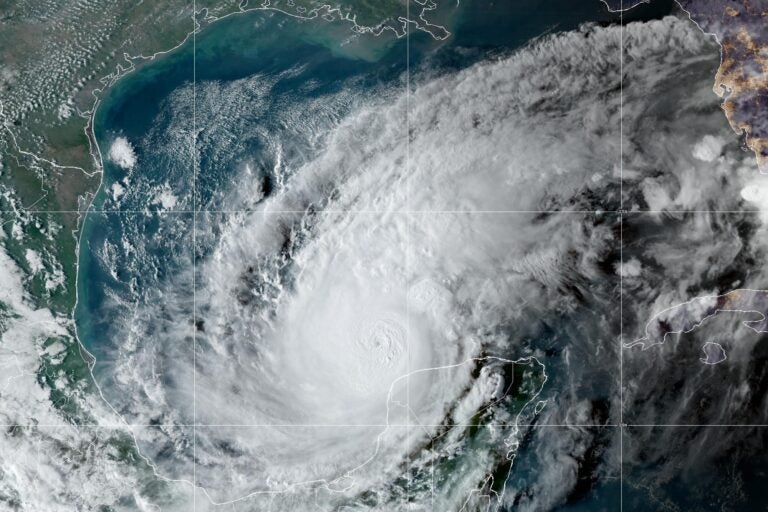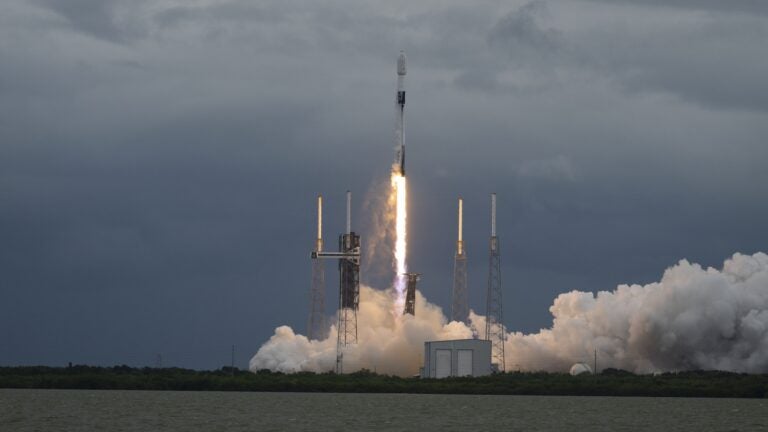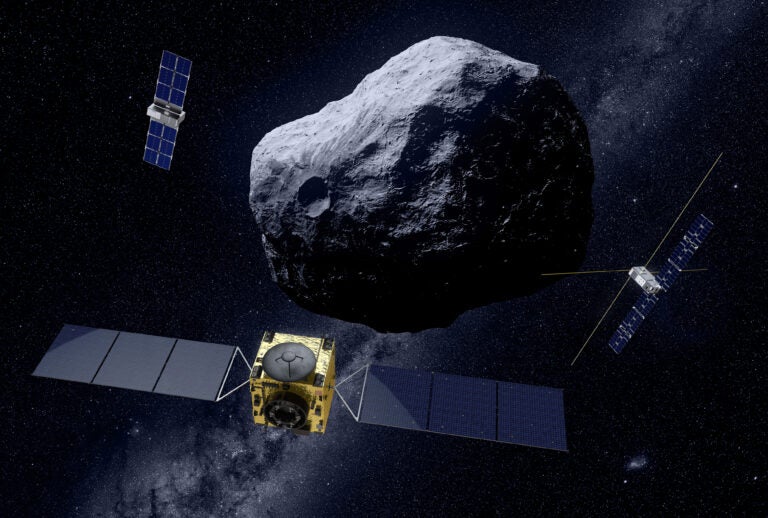Orion, the famous hunter, is visible in evening skies throughout the world from about December through April. The constellation appears tranquil and still to the naked eye, but lying in its sword, at what appears to be a slightly fuzzy star, is a turbulent cauldron of stellar birth.
WISE scanned the whole sky in infrared light, capturing this vast view of the dynamic region called the Orion Nebula. The telescope picked up the infrared glow from dust heated by newborn stars. The colors green and red highlight this warmed dust, while the white regions are the hottest. Massive stars burned through the dust, carving out cavities, the largest of which is seen at the center of the picture.
Astronomers think that our Sun was probably born in a similar cloud some 5 billion years ago. Over time, the cloud would have dispersed and the stars would have drifted apart, leaving us more isolated in space. The crowded newborn stars in the Orion Nebula are less than 10 million years old — billions of years from now, they will likely spread out.

